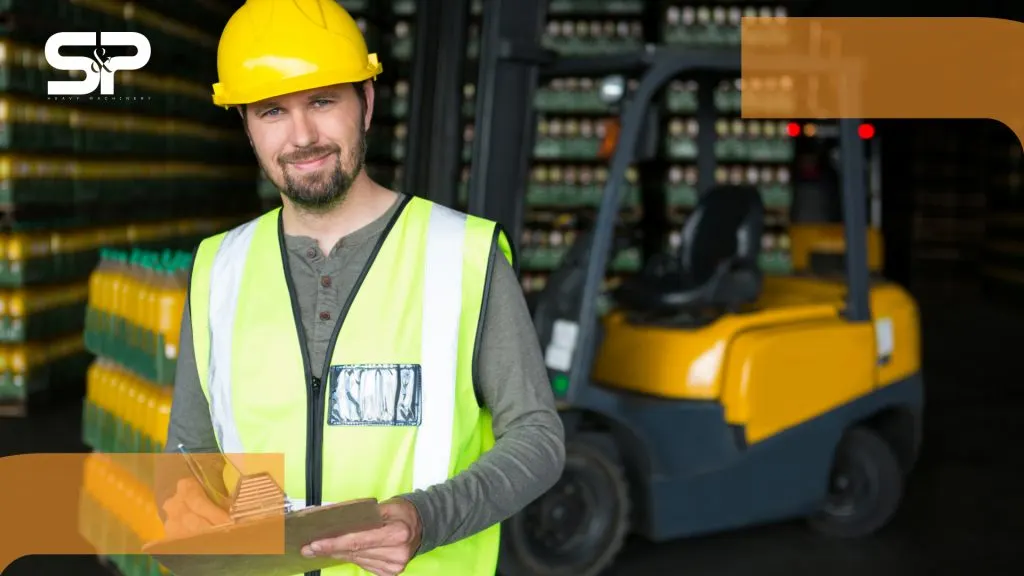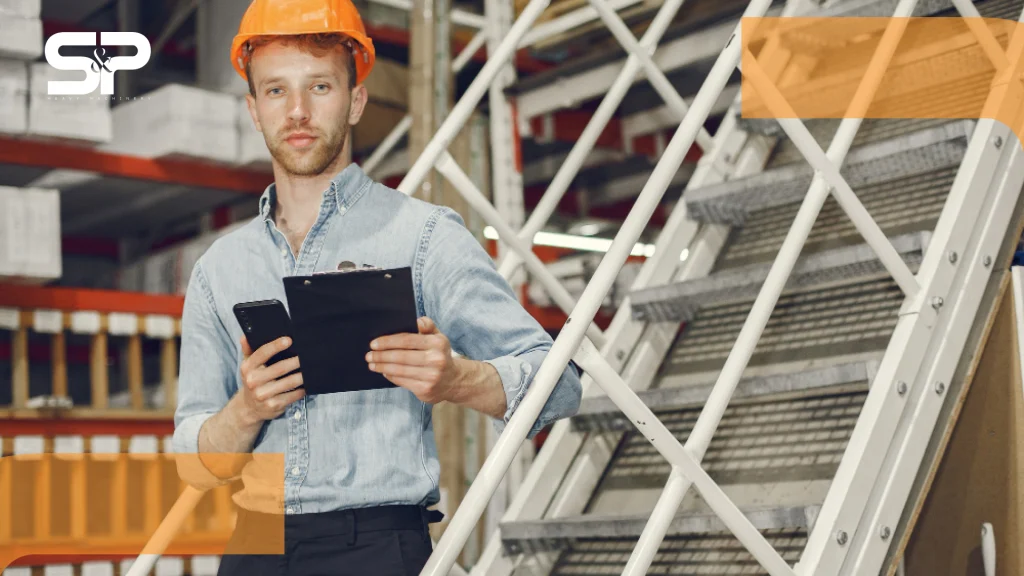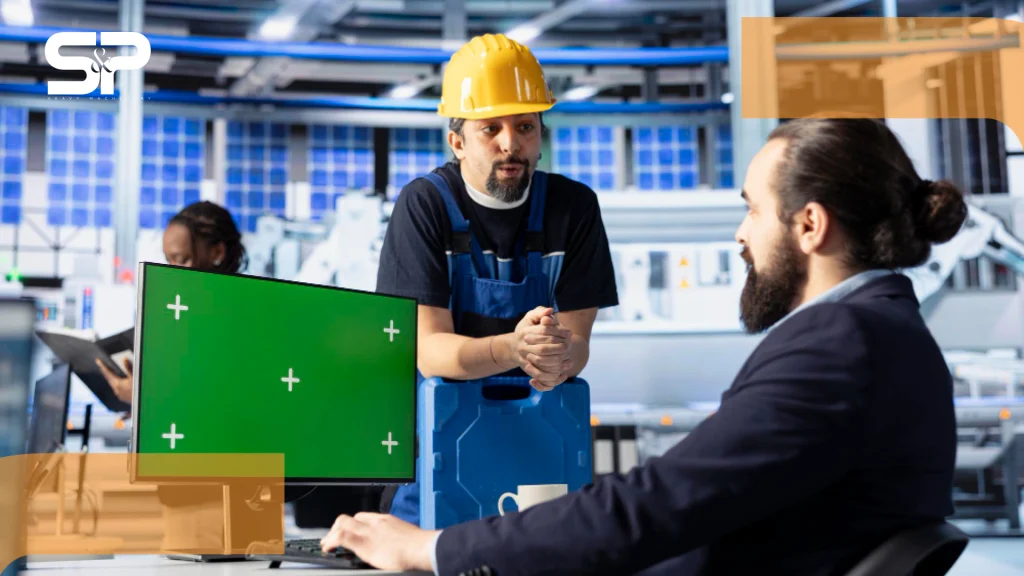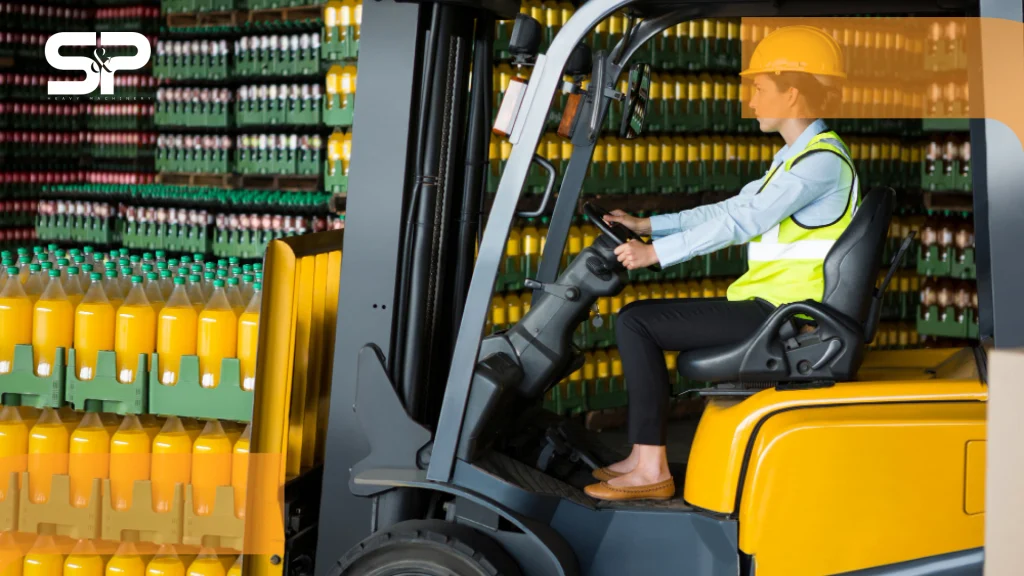Forklift operations may look like a daily routine for workers. But do you know that it is the most hazardous operation in warehouses and industrial areas? Several injuries and accidents due to forklift operations occur, which can be avoided with specific preventive measures.
Forklift safety measures can protect labor and the public, extend performance, and decrease downtime costs. Let’s talk about essential things to avoid forklift hazards in the workplace, warehouses, and industrial settings. This content shares some valuable safety tips for forklift drivers to reduce risks and operate forklifts safely.
Introduction
Forklifts are incredibly beneficial machines that can lift and move huge items. But if they are not utilized properly, their size and strength can be very dangerous.
Forklift accidents cause hundreds of occupational injuries every year. A proactive attitude towards forklift safety is crucial to stop these accidents. Identify risks, train workers, and ensure they comply with rigorous rules. Regular upkeep, clear signs, and set areas can help lower risks. Prioritize forklift safety tips to keep workers safe and enhance productivity.
Brief Statistics on Forklift Injuries in Workplaces
We can only guess how many forklift accidents happen each year since OSHA only requires that accidents be registered or reported when they cause serious harm or fatalities.
Do you know that every year, forklift accidents kill between seventy-five and ninety-five people? It hurt between eight thousand and nine thousand individuals so badly that they needed to take days off work. As you know, forklift injuries are usually worse than other sorts of accidents since they take longer to heal from. It’s hard to say what causes the most common forklift accidents, but here we’ll look at some of the most prevalent forms of forklift accidents and preventive measures for safety.
Importance of Forklift Safety: Worker Well-being and Optimized Operations
Forklift safety is extremely crucial for the health of workers and the company’s operations. It directly lowers the risk of severe injuries, deaths, and harm to property for workers, making the workplace more secure. When workers feel secure, their morale and confidence improve, making them more productive at work.
From an operational point of view, a solid safety program makes things run more smoothly and increases productivity. It cuts down on expensive downtime caused by accidents, equipment repairs, and fines from the government. Companies may keep their productivity steady by reducing accidents, which implies less downtime in their operation. Also, well-trained operators deal with materials more efficiently, which keeps products from being damaged and makes processes better.
Risks of Forklift Operational Activity
Forklift operating presents considerable hazards, including vehicle tip-overs, which are the primary cause of fatalities. Pedestrian accidents are also major concerns as operators can’t see well and workplaces are shared.
Other risks include cargoes falling off because loaders didn’t stack them properly or because they were going too fast, and machines breaking down because they weren’t kept up properly. These risks show how important it is to have the right training, clear safety rules, and a watchful work environment to keep people safe and avoid accidents.
Common Reasons for Forklift Injuries
Forklift accidents are most often caused by speeding, turning the wrong way, and unbalanced and heavy loads. Other important causes are not enough training, not enough maintenance, and accidents involving pedestrians caused by insufficient visibility.
Injuries and Incidents Types Due to Forklift Misuse
Using a forklift incorrectly might cause severe damage. Broken bones, wounds, and fatalities from tip-overs are all common injuries. If weights are stacked improperly, things can fall and hurt people. If you speed up, you can hit other cars and break bones, cut yourself, or hit your head.
Regulatory Compliance
Non-compliance with OSHA and any regional laws for Heavy Construction Equipment. These rules require operators to get training, check their equipment, and comply with safety rules to prevent accidents at work and avoid substantial fines and penalties.
Forklift Safety: Essential Considerations
To avoid accidents and keep the workplace safe, it’s also important to maintain clear vision, follow speed regulations, and observe load limitations. These are some forklift safety tips for the workplace.
Inspections Before Operation
Before every shift, operators must do a full inspection of the equipment. This easy practice can keep equipment from breaking down and identify any dangers.
Clear Signs for Safety
To avoid accidents, it’s important to have clear signs and effective traffic control. A visual layout that keeps forklifts away from people can be made by placing them in specified walkways and well-placed speed restrictions and alert signals. It is one of the best forklift safety tips for pedestrians. This proactive strategy lowers the number of accidents and makes work and safety better overall.
Certified and Trained Forklift Operator
Forklift operators must go through training and get certified. It is one of the best safety precautions. Operators should get both formal training and hands-on testing to ensure they know how to appropriately use the equipment.
Adequate Maintenance and Repairs
Routine repairs and upkeep are very important to keep equipment from breaking down and causing accidents. Following the manufacturer’s instructions and fixing small problems right away are two proactive steps that can help the forklift last longer, cut down on costly downtime, and make the workplace more secure.
Load Handling
Forklift stability depends on how well you handle loads. Best practices include ensuring the weight is centered, balanced, and never heavier than the forklift can handle. To maintain the center of gravity low, operators should also hold the forks close to the ground while driving.
Secure Forklift Operating Practices
To avoid mishaps, it’s extremely essential to follow safe operating procedures and forklift safety training tips. Drivers should always be capable of seeing clearly, go at a safe speed, and utilize their horns at crossings. They also need to ensure they never go over their load limit or make sudden moves that could lead them to tip over.
Creating a Secure Culture
It’s extremely crucial to have a strong safety-oriented culture. Everyone in the organization has to be committed to it, and workers should feel safe reporting hazards. It creates a culture where everyone is responsible for safety, not just following rules.
Promoting Honest Reporting of Safety Issues
It is crucial to have an open policy for reporting safety issues. Employees should feel free to point out and report hazards such as a broken forklift or a dangerous way of doing things, without worrying about getting in trouble. This method lets you solve problems before they happen.
Management’s Job is to Enforce Regulations
Management is extremely crucial for forklift safety since they set an example and always make sure that rules are strictly observed.
Identifying Safe Actions with Compliance
A strong forklift safety program has to recognize and promote safe behavior and compliance. There are several ways to achieve this, such as distributing safety awards, recognizing people in public, or even giving them small bonuses for complying with the rules and keeping the operation accident-free.
Effective Use of Technology for Forklift Safety
New technologies are changing the way forklifts are used safely. These technologies make the workplace smarter and more responsive. It helps keep people safe and prevents incidents before they happen.
Automated Guided Vehicles
Automated Guided Vehicles (AGVs) are changing the way safety works in dangerous places. AGVs take over dangerous jobs like moving hazardous items or working in extreme weather to keep people safe. It is the best forklift pedestrian safety tips, using AGV technology to keep everything running efficiently and without mistakes in harsh circumstances, and prevents accidents.
Alerts and Monitoring
Monitoring and alarm systems are making construction equipment rental safety much better. Forklifts have sensors that can detect when someone is doing anything dangerous, like speeding or stopping suddenly, and they tell supervisors right away so they can take action instantly.
Legal Consequences of Overlooking Forklift Safety
If you don’t pay attention to forklift safety, you could face serious legal and financial issues. Companies have to pay fines and face lawsuits. Accidents also cost more to fix equipment, lost productivity, and hurt credibility.
Financial Loss from the Accidents
Ignoring safety can cost more. These expenses include direct expenditures like workers’ payments, legal negotiations, and fines. The additional expenses include decreased productivity, equipment damage, and higher insurance rates.
Credibility Impact
Not following forklift safety rules may harm a company’s credibility. Accidents usually raise insurance rates and impair the brand’s public image.
Conclusion
In conclusion, placing safety priority for forklifts isn’t just about complying with the rules, it’s also beneficial to business. Companies can keep their workers safe, increase productivity, and save funds by following best practices.
Call SP Heavy Rental today to handle the best way for your heavy tools and protective gear for your business.
FAQs
Why is it necessary to be safe when using forklifts at work?
Forklift safety is extremely crucial since it keeps people from suffering fatal injuries and makes a business more productive.
What are the OSHA criteria for forklift operators?
OSHA specifies that all forklift operators must be a minimum of 18 years old and completely trained and certified.
What security characteristics should a forklift have?
A forklift needs a horn, a seatbelt, and an overhead guard. Modern forklifts also contain things like alert lights, emergency alarms, and sensors that tell them when they are too close to anything to avoid accidents.
What kind of training is required for forklift operators?
Forklift operators should get training that involves instruction and practical experience, and then their mentors should check their performance properly.




